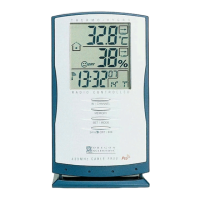
Do you have a question about the Oregon Scientific RMR132HG and is the answer not in the manual?
| Display | LCD |
|---|---|
| Temperature Sensor | Yes |
| Humidity Sensor | Yes |
| Alarm Function | Yes |
| Wireless Sensor | Yes |
| Projection | No |
| Alarm | Dual Alarm |
| Time Format | 12/24 Hour |
| Power Source | Battery |
| Features | calendar, indoor/outdoor temperature and humidity |
| Temperature Display | Celsius/Fahrenheit |
Details on the three-line LCD, battery status, and radio reception signal.
Explanation of buttons for channel selection, mode setting, memory, and reset.
Information on alarm icons, alarm activation/disabling, and clock settings.
Covers wall-mount hole, battery compartment, and removable table stand.
Description of the two-line LCD, LED indicator, and slide switches for settings.
Details on battery compartment, door, wall-mount holder, and table stand.
Instructions for installing batteries and selecting channels on the remote unit.
Procedure for inserting batteries into the main unit.
How to select and view temperature/humidity from main or remote units.
Interpreting the kinetic wave icon for signal status.
Explanation of icons indicating comfort, dry, or wet conditions.
Understanding trend arrows for rising, steady, or falling measurements.
Activating and deactivating automatic scanning of remote sensors.
How to view and recall stored maximum and minimum temperature/humidity.
Procedure to clear recorded maximum and minimum temperature/humidity data.
Setting high/low temperature and humidity limits for channel-1 alarms.
How to stop a ringing alarm or deactivate the alarm function.
Troubleshooting steps for lost remote sensor signals.
Explanation of potential interference from other household devices.
Step-by-step guide for manually setting the clock and date.
Instructions for setting alarm times for Alarm 1 and Alarm 2.
Methods to stop an active alarm sound and disarm the alarm.
Reference for time zone settings and offsets.
Important safety and handling guidelines for the device.
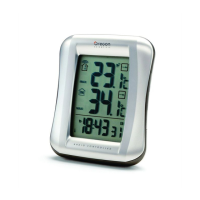

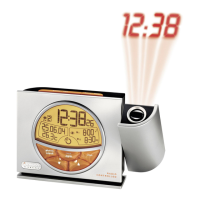
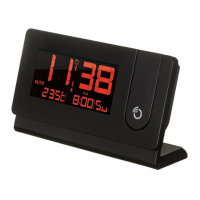
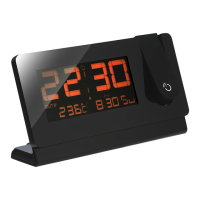
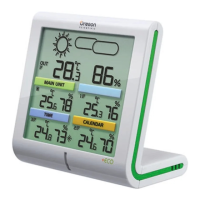

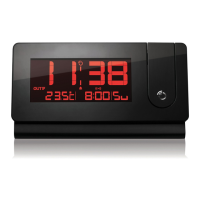
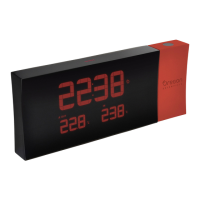
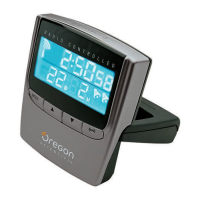
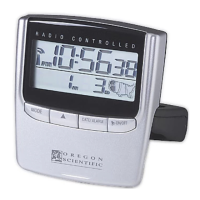

